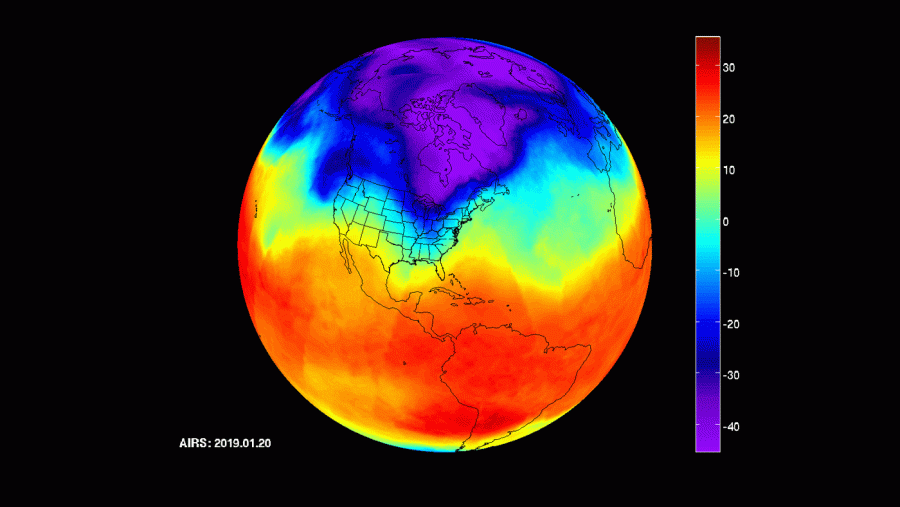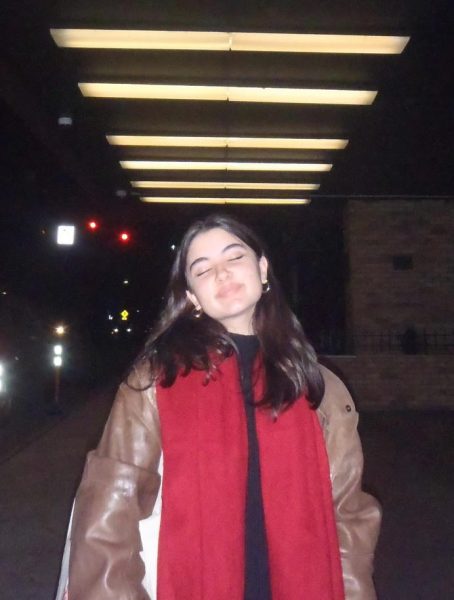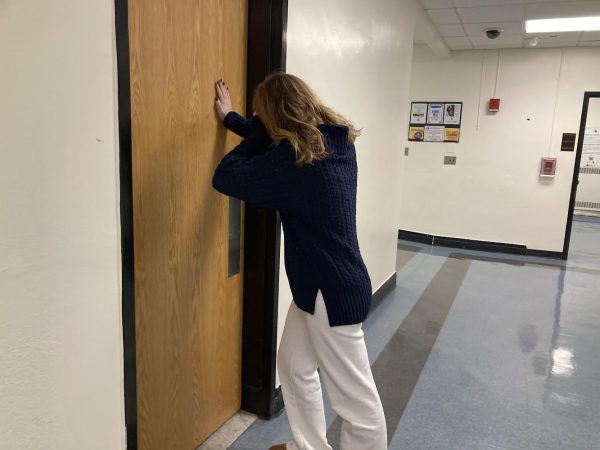The Reality of Global Warming and Cold Weather
The scientific relationship between cold weather and the effects of climate change
NASA captures a polar vortex moving throughout Central Canada and the U.S. midwest from January 20th to January 29th using their Atmospheric Infrared Sounder (AIRS)
February 20, 2019
Climate change has altered the environment of our planet, threatening nature and human civilization alike with warmer temperatures, higher sea levels, and greater temperature shifts between seasons. However, periods of unusually cold weather, such as the recent polar vortex which hit the midwest, may seem confusing to average citizens who do not quite fully understand the relationship between long-term climate trends and weather patterns. After all, these record-low temperatures for the midwest occured at a time when climate trends have shown that the midwest is experiencing rapid warming “at night and during winter,” according to the National Climate Assessment.
The midwest is the region in America that has the highest number of citizens who disagree with the idea that human activity is mostly responsible for climate change, according to the Yale Program on Climate Change Communication’s 2018 poll. The polar vortex may be used to further advance this belief that mankind has had no significant impact on the climate, since the polar vortex brought on powerful onslaughts of freezing temperatures in an age where human carbon emissions are rapidly expanding. Even some politicians have come to liken this idea. On January 28, in response to the polar vortex, president Donald Trump tweeted the following:
“In the beautiful Midwest, windchill temperatures are reaching minus 60 degrees, the coldest ever recorded. In coming days, expected to get even colder. People can’t last outside even for minutes. What the hell is going on with Global Warming? Please come back fast, we need you!”
Like many other Americans, Trump appears to be confused by these strange, cold weather patterns. But what may seem as a surprise to many is that the range and severity of this polar vortex was actually a result of increasing global temperatures. The effects of global warming are not solely limited to long-term heating, but a combination of changes. Melting ice and snow from regions that experience year-round winters have released extra moisture into the atmosphere. It is from this extra moisture that storm systems fuel themselves into larger and more severe systems, since more water in the atmosphere increases snowfall and storm duration. Although it seems contradictory at first glance, in reality, winter storms continue to grow more severe as the planet warms.
The polar vortex is a specific system which forms every winter as temperatures fall, creating a “jet stream of westerly winds” that trap “the cold air over the pole like a crown holding hair in place.” Usually, the system remains confined to the arctic in a stable rotation in the far north. However, if a wave of warm air comes in from the south and intersects the vortex, it can be knocked off its rotation, pushing cold air south, which is what happened to Europe in 2017. Splitting is another type of vortex disruption. If warming arrives from two directions at once, the cold air can be cut off into sections. According to PBS, last December, “the Arctic experienced what’s known as sudden stratospheric warming. A heat blitz struck the polar vortex, sending abnormally warm air more than 25 miles up above the North Pole.” This sent cold wind down to Canada and the midwest, prompting the extremely cold weather.
The polar vortex, if anything, is a sign that our planet is experiencing a sudden period of rapid warming. The extra moisture in the atmosphere is an apparent sign that ice and snow continue to melt at the poles. While some deniers continue to use severe winter storms as excuses to play down the threat climate change, our summers—and winters—will experience enormous temperature shifts at both extremes. It is important to fully understand the science behind global warming before we make any assumptions about the truth. Climate change does not adhere to our political beliefs: it is a real thing with real effects on our planet that we are still learning about. Even though it may feel colder, our world is definitely heating up.













